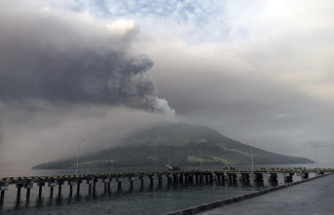In a statement posted on its official WeChat profile, the Chinese Space Agency gave the coordinates of the impact: in the Sulu Sea, about 57 kilometers off the east coast of the island of Palawan in the Philippines.
"Most of its devices were destroyed" during the descent, the agency said of the booster rocket, which was used last Sunday to launch the second of three modules China needed to complete its new Tiangong space station, which should be fully operational by the end of the year.
The return to the atmosphere of the Chinese rocket had been announced several hours earlier by the American army.
"Space Force Command confirms that the People's Republic of China's Long March-5B rocket re-entered the atmosphere over the Indian Ocean on July 30" at 4:45 p.m. GMT, tweeted l US Army.
The Malaysian space agency for its part said it detected debris from the rocket burning before falling into the Sulu Sea, northeast of the island of Borneo.
"The rocket debris caught fire upon entering Earth's airspace and the movement of the burning debris also passed through Malaysian airspace and could be detected in several areas, including traversing the airspace around the state of Sarawak," she said.
- Critiques -
The Long March-5B rocket was not designed to control its descent from orbit, which, as with previous launches, has drawn criticism.
China “has not given precise information on the trajectory of their Long March-5B rocket,” NASA boss Bill Nelson tweeted on Saturday.
"All nations conducting space activities should adhere to best practices" because the fall of objects of this size "presents significant risks of causing human or material loss", he added, stressing that the sharing of information was "essential" for the "responsible use of space and to keep people safe here on Earth".
Entering the atmosphere gives off immense heat and friction, segments may then burn up and disintegrate, but larger craft, such as the Long March-5B, may not be entirely destroyed.
Their debris can then land on the surface of the earth and cause damage and cause victims, even if this risk is low, the planet being covered with 70% of water.
In 2020, debris from another Long March crashed into villages in Côte d'Ivoire, causing damage but no injuries.
The Asian giant has been investing billions of euros for several decades in its space program.
The Tiangong space station is one of the jewels of this program.
China sent its first astronaut into space in 2003. In early 2019, it landed a spacecraft on the far side of the Moon, a world first. In 2021, she landed a small robot on Mars and she plans to send men to the Moon by 2030.












